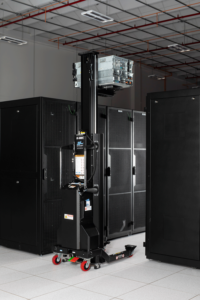 Does it seem like your customers’ needs intensify more every year, forcing you to get newer and more powerful hardware to meet demand? It’s not all in your imagination. Though technology advancements always drive the need for data center upgrades, many data center operators are reporting that changes are coming even faster than before.
Does it seem like your customers’ needs intensify more every year, forcing you to get newer and more powerful hardware to meet demand? It’s not all in your imagination. Though technology advancements always drive the need for data center upgrades, many data center operators are reporting that changes are coming even faster than before.
Increased rack power densities in the average data center are a sign of these changes. Most data centers have seen their average rack density rise rapidly over the past few years. Data center operators have adapted by finding ways to provide more computing power without having to expand their physical spaces.
Let’s see why the demand for more power is driving innovative design choices and how you can adopt some of these strategies in your own facility.
Data center density trends have recently started to accelerate beyond the normal year-over-year increases.
For a long time, the average data center rack supported equipment that used somewhere between 2 to 5kW of power. Though power density was increasing steadily, the rise was fairly predictable. In the last four years, the average almost doubled.
Most data center survey respondents said in 2020 that they still operate high-power racks ranging from 10 to 19kW, which perform decently well without too many rack or cooling upgrades. But 16 percent of the data survey respondents reported racks using more than 20kW. Beyond that point, cooling, weight, and other factors start to become urgent issues.
The same 16 percent of respondents reported that their average density had increased very quickly over the previous year. 53 percent of respondents reported continual, slow increases in place of rapid expansion. From 2017 to 2020, the average server rack density increased from 5.1kW to 8.4kW in steady increments. This trend is expected to continue in the future.
Power requirements for specialty facilities are even higher. Hyperscale data centers that specialize in high-performance computing (HPC) frequently reach over 50kW per rack because they support multiple high-intensity applications running simultaneously. Considering a single AI application can use around 30kw of power, you can easily imagine how power-hungry multiple applications such as AI would be.
Why is rack density increasing more rapidly in recent years?
 Several exciting technology advancements have emerged over the last several years. Artificial intelligence (AI) and machine learning (ML) are two technologies that are becoming more powerful every day. The forward march of technology creates the need for more processing power. AI and ML, in particular, crunch numbers in massive data sets that no human could ever hope to manage without advanced computing. And those are just two technologies among many that are experiencing rapid growth.
Several exciting technology advancements have emerged over the last several years. Artificial intelligence (AI) and machine learning (ML) are two technologies that are becoming more powerful every day. The forward march of technology creates the need for more processing power. AI and ML, in particular, crunch numbers in massive data sets that no human could ever hope to manage without advanced computing. And those are just two technologies among many that are experiencing rapid growth.
Businesses and consumers have quickly adapted to smart technology, which has meant widespread device connection to the internet through IoT networks. Almost everyone uses cloud services in some capacity, from individual consumers to multinational corporations. When you add blockchain technology and cryptocurrency mining to the equation, it’s amazing that data centers have managed to keep up with the demand for computing power.
More powerful hardware, including advanced server processors, graphic processing units (GPUs) and custom ASICs, use energy at a rate that far exceeds what the typical hardware data centers have used in the past. For example, a typical server processor in 2010-2015 used less than 100w of power, while processors today come in at nearly 500w. That’s a stunning increase in less than a decade.
These trends have made data centers move toward greater efficiency by increasing rack densities and optimizing cooling strategies. Traditional air cooling simply can’t dissipate the intense heat in a high-density area, so it would be dangerous to significantly increase rack density without upgrading cooling technology as well. Data centers that are maximizing rack density will likely need to upgrade to efficient liquid-cooling systems.
For some data center operators, these upgrades are a continuous, positive cycle toward future-proofing their facilities. For others, it’s a more reactive response to increasing demand and pressure from customers.
Technological advances, with even greater power needs, will always present challenges for data centers. Increased rack densities are predicted to continue for small facilities and enterprise data centers and for hyperscale and HPC centers. Even if your data center is small to medium-sized, you need to prepare for growth.
There are several benefits to planning for this level of growth.
These changes bring opportunities to data centers that are in a position to upgrade equipment and infrastructure to match growth and demand. While keeping up with the trends will be more difficult for data centers operating older equipment, those poised to take opportunities for advancement could:
- Optimize cooling efficiency by upgrading from air cooling to liquid cooling.
- Pack more equipment into a smaller footprint, allowing operators to keep the same processing power in a smaller data center or more equipment in a larger data center.
- Combine services onto more powerful, shared servers instead of dedicated servers. This means less overall separate equipment is required.
- Stack servers higher on vertical racks, minimizing the floor space taken up by equipment and allowing room for more equipment.
Rather than trying to overhaul entire facilities all at once, the more advanced data centers are looking for ways to complete systematic, prioritized upgrades. Data centers with the most flexible and adaptable plans for growth will experience the smoothest transitions. It may not be possible to take on several huge AI projects at once, but careful planning could propel a savvy operator in the right direction.
To make things easier, prioritize upgrades based on your facility’s most urgent needs. Here are a few ideas:
- New, high-powered chips and server equipment
- New racks with higher load ratings
- Reinforcements to flooring and other infrastructure that will be placed under heavy loads
- Taller racks
- Cooling upgrades
- Data center lifts with extensions capable of reaching those taller racks and handling heavier loads
 If your facility simply cannot accommodate these upgrades, or you don’t have the ability to overhaul your whole setup, investigate setting up some equipment in a third-party facility to maintain your data center’s operations.
If your facility simply cannot accommodate these upgrades, or you don’t have the ability to overhaul your whole setup, investigate setting up some equipment in a third-party facility to maintain your data center’s operations.
Upgrading your supportive infrastructure early, before it’s urgently necessary, could save you time and trouble down the road. Data center outages due to insufficient power have increased alongside the higher rack densities, according to data center surveys. As many as 78 percent of data centers experienced a power outage in 2020, which was an increase from 50 percent in the two previous years. Data center trends in 2021 have not yet been fully reported, but we expect to see a similar result.
Most of the data center operators who responded to the survey believed the outages could have been prevented with “more investment in management, process, and training.”
Make sure your facilities have data center lifts capable of handling ever-increasing densities.
Being able to move servers and other heavy equipment around safely is critically important. This task was tough enough with lower-density racks. Higher-density racks and tighter data center designs have only made the job more challenging.
ServerLIFT® offers several excellent options for moving heavy equipment safely and efficiently such as the SL-500X® Electric Lift and the SL-1000X® Super-Duty Lift. These incredibly versatile data center lifts are compatible with several attachments, including the LE-Series Lift Extensions, the GT-1000X™ Glide Table, and the RL-500 Platform Riser, so you can safely install or remove hardware from all the hard-to-reach places. Along with a no-hassle, complete-care Extended Warranty and Service contract, this suite of products can make up one of the most essential tools for any data center to easily solve what would otherwise be their most basic and difficult day-to-day operational challenge.










